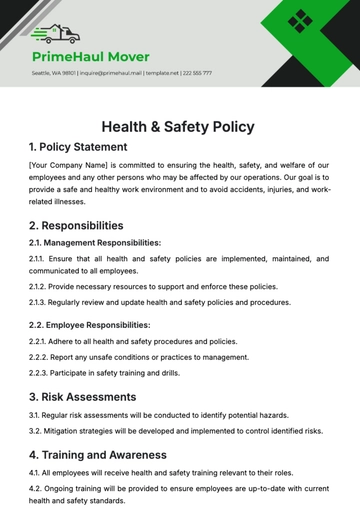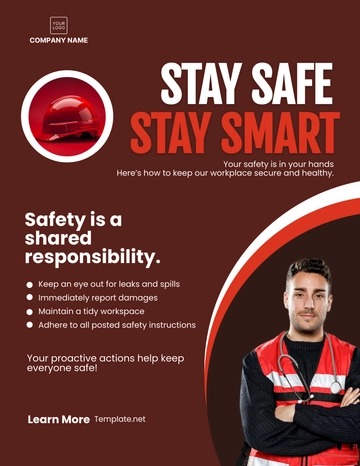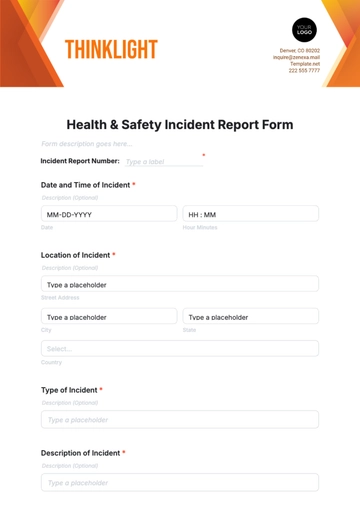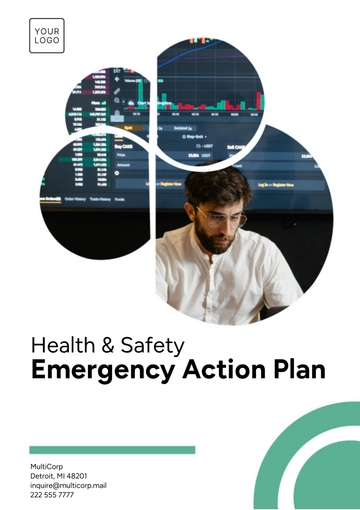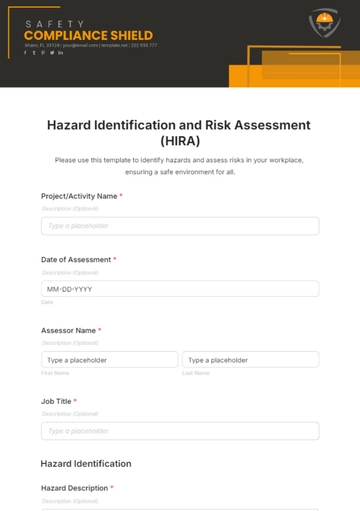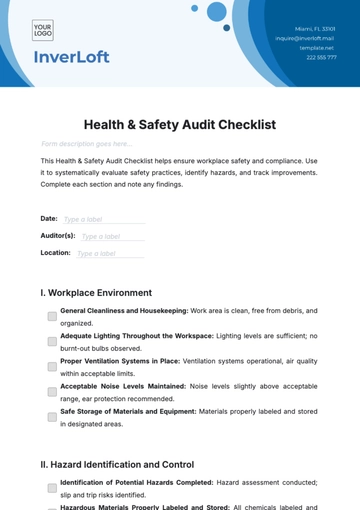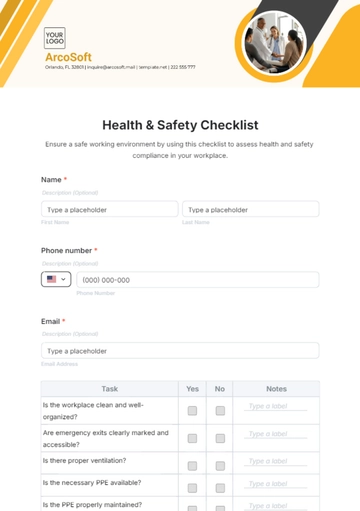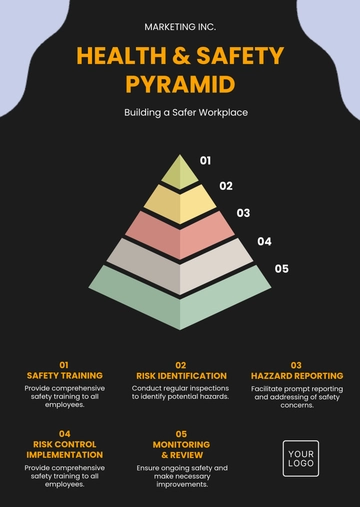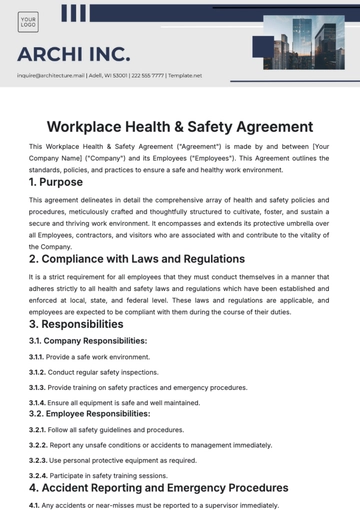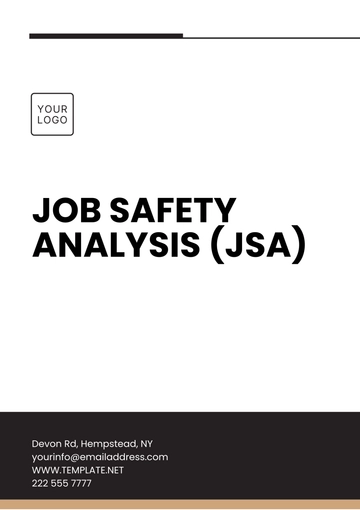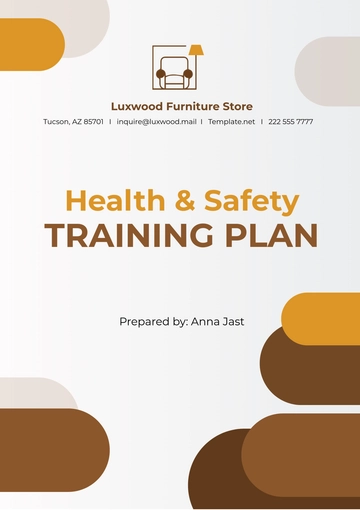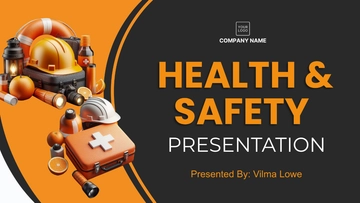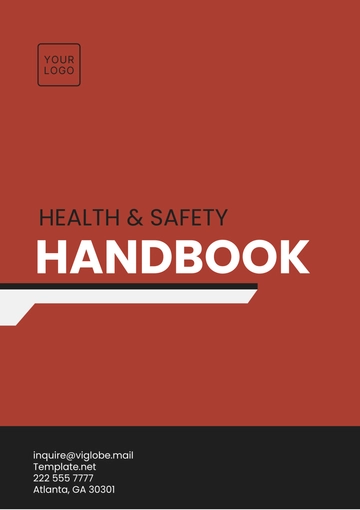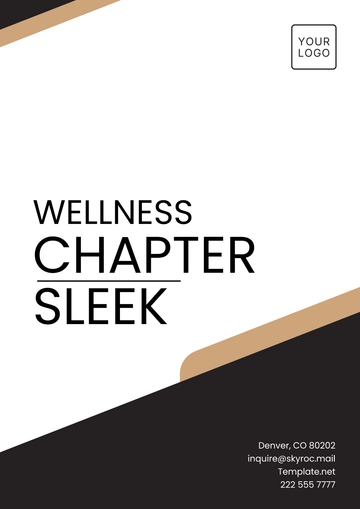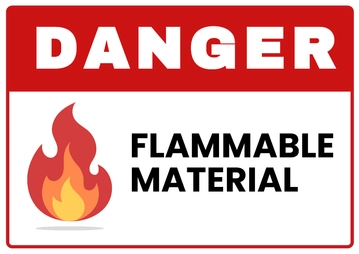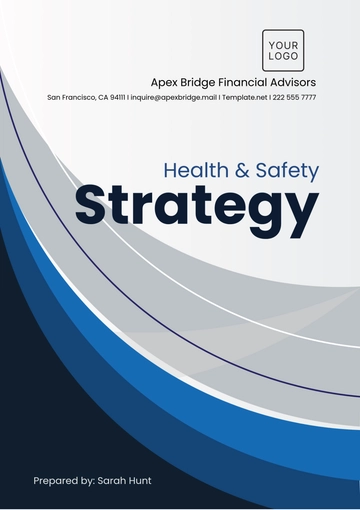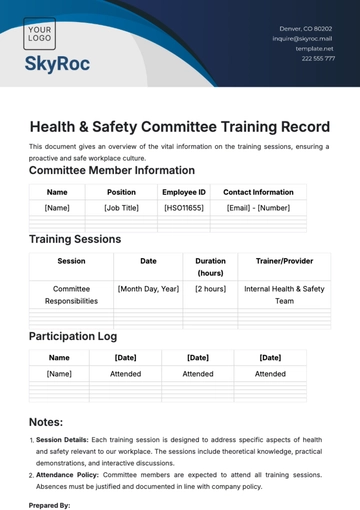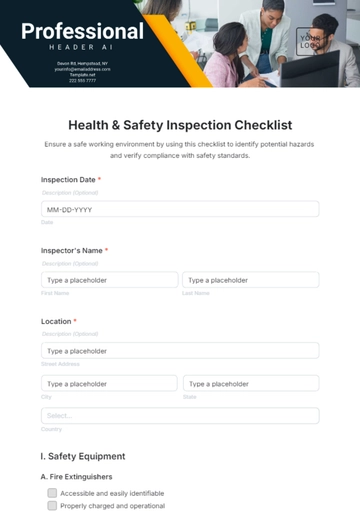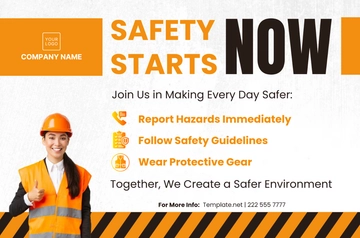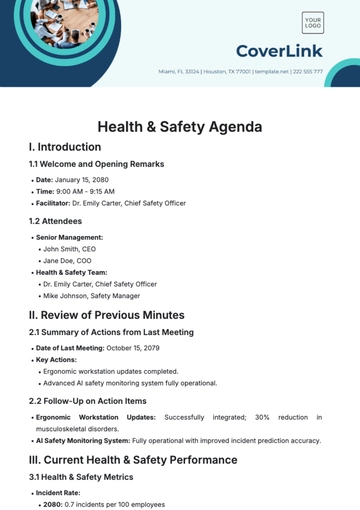Free Nursing Home Environmental Health and Safety Compliance Guide
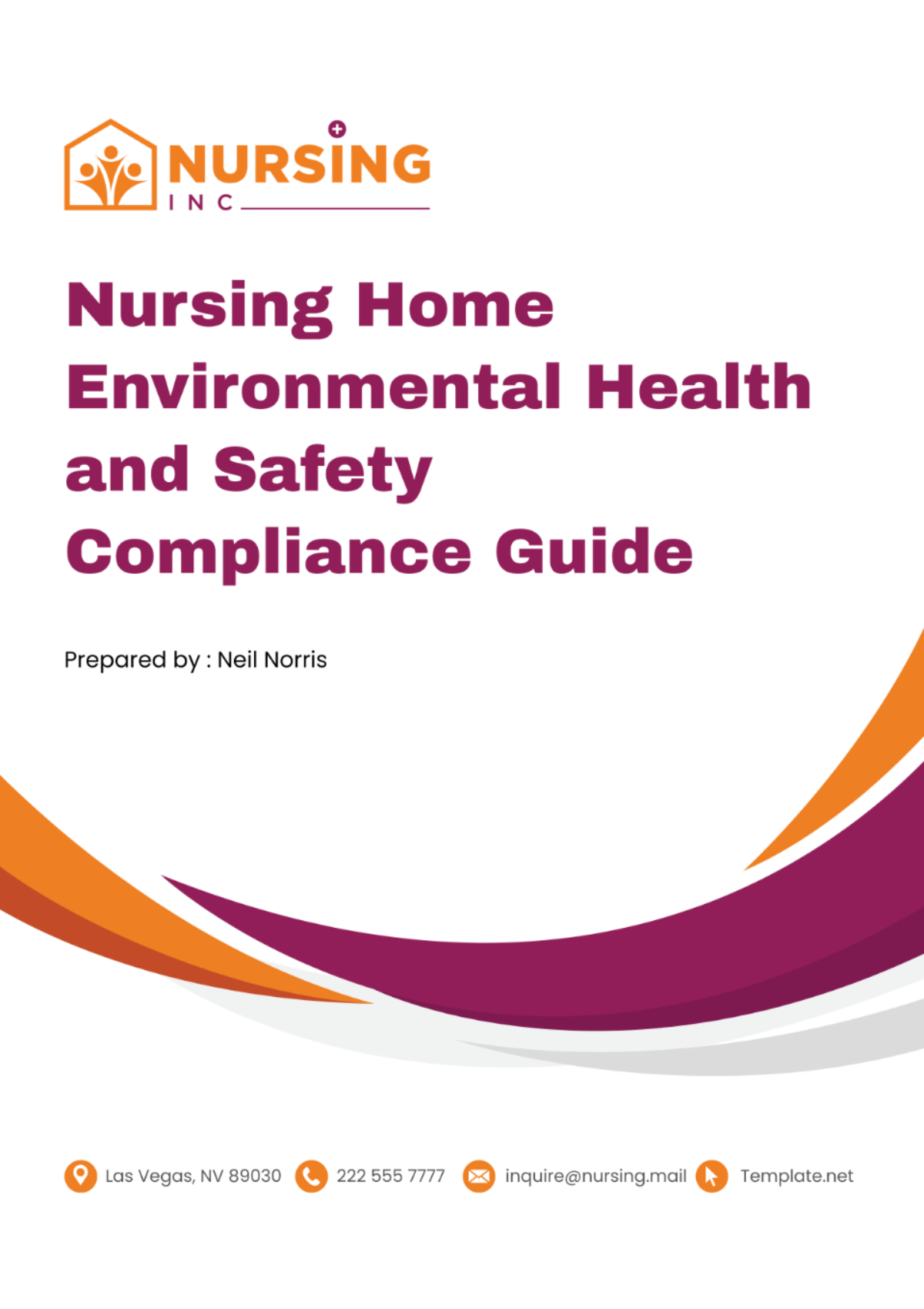
I. Introduction
Welcome to our comprehensive Environmental Health and Safety Compliance Guide, meticulously prepared by [Your Name], an expert in nursing home safety protocols. This manual is a cornerstone resource designed to support the continuous improvement of health and safety standards within nursing facilities. By incorporating these guidelines, we aim to create a robust framework for preventing accidents and ensuring a safe, healthy environment for our residents and staff. The practices outlined here adhere to the highest regulatory standards and reflect our commitment to excellence in care.
Our commitment extends beyond mere compliance; it encompasses a proactive approach to cultivating a culture of safety and awareness. This guide provides detailed insights into effective risk management strategies and introduces best practices for environmental health that are critical to the operational success of nursing homes. By systematically implementing these protocols, your facility will not only meet legal requirements but also enhance the quality of life for all occupants, ensuring that health and safety are at the forefront of every action and decision.
II. Infection Control Standards
Ensuring adherence to infection control standards is paramount in maintaining the safety and well-being of both residents and staff within our nursing home. This section outlines essential practices and procedures designed to minimize the risk of infectious diseases through stringent cleanliness protocols, effective social distancing, and the judicious use of Personal Protective Equipment (PPE). By rigorously following these guidelines, we can uphold a health-conscious environment conducive to high-quality care.
Regular Disinfection: Maintain a sterile environment through routine cleaning and disinfection of surfaces, particularly in high-traffic areas.
Hand Hygiene Promotion: Encourage frequent and effective handwashing among all residents and staff as a primary means of disease prevention.
Social Distancing Protocols: Implement measures to minimize close contact between individuals during infectious outbreaks to prevent disease spread.
Prompt Infection Response: Establish rapid response protocols for handling cases of infection, ensuring immediate isolation and treatment to protect community health.
PPE Usage: Promote consistent and correct use of Personal Protective Equipment among staff and residents to provide a physical barrier against pathogens.
III. Environmental Health Compliance
Adhering to environmental health standards is crucial in ensuring the safety and well-being of nursing home residents. The table below outlines key parameters that focus on maintaining optimal indoor air quality, implementing effective waste management, and handling hazardous materials with utmost care. Strict compliance with these standards ensures a safe, clean, and healthy environment conducive to the care and comfort of all residents.
Parameter | Standard | Details | Compliance Measures |
|---|---|---|---|
Indoor Air Quality | Maintain optimal air quality | Ensure proper ventilation, control humidity, and conduct regular monitoring of air quality indicators like CO2 levels and particulates. | Install and maintain HVAC systems; schedule regular air quality assessments; enforce no-smoking policies. |
Waste Management | Ensure effective segregation and disposal | Implement clear protocols for segregation of medical, chemical, and general waste. Equip facilities with appropriate disposal units. | Conduct training on waste handling; monitor waste management practices; employ licensed waste disposal services. |
Hazardous Material Handling | Safe management and handling of hazardous materials | Identify and label all hazardous materials. Ensure that handling is done by trained professionals using the correct procedures and equipment. | Provide ongoing training for staff; use proper storage methods; establish spill response protocols. |
This structured approach to environmental health compliance not only aligns with regulatory requirements but also enhances the overall safety standards of the nursing home. By focusing on these critical areas, we proactively address potential health risks, thereby ensuring a safer and more comfortable living and working environment for our residents and staff.
IV. Emergency Preparedness
Preparedness for emergencies, including natural disasters or disease outbreaks, is essential for the safety and security of nursing home residents and staff. The Nursing Home Environmental Health and Safety Compliance Guide provides a comprehensive framework for readiness. The following table details crucial aspects of our emergency preparedness strategy, ensuring swift and effective responses to various emergency scenarios.
Aspect | Standard | Details | Implementation Strategy |
|---|---|---|---|
Emergency Evacuation Plans | Establish clear routes and exits | Include detailed maps of evacuation routes and accessible exits, regularly reviewed and updated. | Conduct regular drills; display evacuation maps at key points throughout the facility. |
Staff Training | Train staff to handle emergencies effectively | Provide comprehensive training on emergency procedures, including role-specific responsibilities. | Offer periodic training sessions and simulations to ensure readiness. |
Accessibility of Documents | Keep medical and legal documents protected yet accessible | Secure critical documents in fireproof, waterproof storage accessible to authorized personnel only. | Regularly update document storage protocols and train staff on retrieval processes. |
Emergency Supplies and Medicines | Maintain a well-stocked supply of emergency essentials | Keep a supply of necessary medicines, medical supplies, food, water, and other essentials. | Monitor stock levels and expiration dates; replenish supplies quarterly or as needed. |
Communication Plan | Develop a robust contact and communication strategy | Outline methods and tools for internal and external communication during emergencies. | Establish a chain of command and provide staff with contact lists and communication devices. |
This systematic approach ensures that all aspects of emergency preparedness are addressed, from logistical planning to staff training and communication. By rigorously implementing these guidelines, the nursing home not only safeguards its residents and staff but also enhances its capability to manage and recover from emergencies effectively.
V. Compliance Verification
Regular inspections and audits are integral to ensuring strict adherence to the guidelines outlined in the Nursing Home Environmental Health and Safety Compliance Guide. This section emphasizes the importance of routine assessments in maintaining a safe and healthy environment for residents and staff. Utilizing checklists and templates provided in the guide facilitates comprehensive evaluations aimed at tracking compliance, identifying areas for improvement, and mitigating risks associated with environmental hazards. By fostering a culture of safety and hygiene through these audits, nursing homes can proactively address concerns and uphold the highest standards of health and safety.
Objective | Details | Implementation Strategies |
|---|---|---|
Track Compliance | Monitor adherence to prescribed standards through systematic inspections and audits. | Schedule regular inspections on a quarterly or biannual basis; utilize standardized checklists. |
Identify Areas of Improvement | Identify and address deficiencies or gaps in compliance promptly to prevent potential risks or hazards. | Conduct thorough assessments; prioritize corrective actions based on severity and urgency. |
Ensure Overall Health and Safety | Promote a safe and healthy environment by addressing identified issues and implementing preventive measures. | Involve staff members in the audit process; encourage open communication and feedback. |
Mitigate Risks Associated with Hazards | Proactively assess and mitigate risks associated with environmental hazards to safeguard residents and staff. | Implement risk management strategies; establish protocols for emergency response and contingency planning. |
Encourage a Culture of Safety | Foster a culture of safety and hygiene by emphasizing the importance of compliance and participation in audits. | Recognize and reward adherence to safety protocols; provide ongoing training and support for staff. |
By incorporating compliance verification as a routine aspect of operations, nursing homes demonstrate their commitment to maintaining a safe and healthy environment. These audits not only ensure regulatory compliance but also contribute to continuous improvement and the overall well-being of residents and staff.
VI. Concluding Remarks
This guide serves as a cornerstone resource in upholding the mission and commitment of [Your Company Name] to deliver exceptional healthcare services. Through its concise yet comprehensive framework, this guide embodies our dedication to maintaining safe and healthy environments within nursing homes. By adopting the integrated approach outlined herein, nursing homes can align with regulatory standards and industry best practices, ensuring the well-being and safety of residents remain paramount.
It is imperative that all stakeholders within nursing homes, from management to frontline staff, embrace and implement the protocols and recommendations provided in this guide. By doing so, we not only fulfill our obligations to regulatory compliance but also demonstrate our unwavering commitment to providing superior care. Let us continue to prioritize the health and safety of our residents, fostering an environment where they can thrive and flourish with confidence and peace of mind.
- 100% Customizable, free editor
- Access 1 Million+ Templates, photo’s & graphics
- Download or share as a template
- Click and replace photos, graphics, text, backgrounds
- Resize, crop, AI write & more
- Access advanced editor
Ensure comprehensive compliance in nursing home settings with Template.net's Nursing Home Environmental Health and Safety Compliance Guide Template. Fully editable in our Ai Editor Tool, this customizable document aids in streamlining necessary safety protocols. Save time and keep up to speed on regulatory requirements without compromising quality and precision. Embrace compliance made convenient today.

